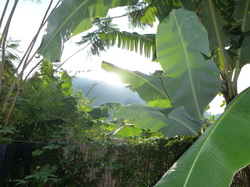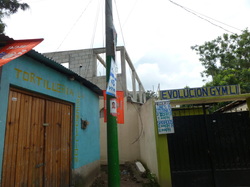

I do not think I could ever tire of watching the Mayan women in their corte skirts, intricate huipils and thin soled sandals. On top of their heads, they carry enormous bundles the size of clothesbaskets, their mysterious contents secured in woven cloth. Their load rests, unsecured, on velvet or woven headbands. It’s as if the bundles float above their heads as they weave through kids, dogs, bikes, tuk tuks and tourists, walking on cobblestone streets and foot paths without tripping or even glancing down at the uneven ground.
There continue to be Mayan calendar “day keepers” in this area and consistent ritual is a part of life for many people . The Mayan shamans are becoming more vocal about their understanding of the 2012 prophesies of the Mayan calendar. Some of these Mayan shamans now offer ceremonies to foreigners as well as education about the Mayan calendar and the living Mayan culture. I will make several visits to Lake Atitlan as I explore contacts for this aspect of the BFGT tours.
The artenisia has both evolved and diversified since I was here in 1995. There is a stronger movement for fair trade here and more opportunities for children to attend school. But still there are children nearly hidden under piles of weavings, their hands full with bookmarks and bracelets, walking up and down the artenisia street all day and late into the night selling.
Also in evidence were Argentinean fire dancers who dance with sinuous grace while swinging lit torches and an all-woman marimba band pwith one of the most accomplished marimba players I have encountered so far playing in one of the many local cafes .
Tomorrow I will get a closer look at Lake Atitlan as I board a local boat across the lake to San Pedro, one of the many pueblos on the shores of this lake which Aldous Huxley called, “the most beautiful lake in the world.”

 RSS Feed
RSS Feed

